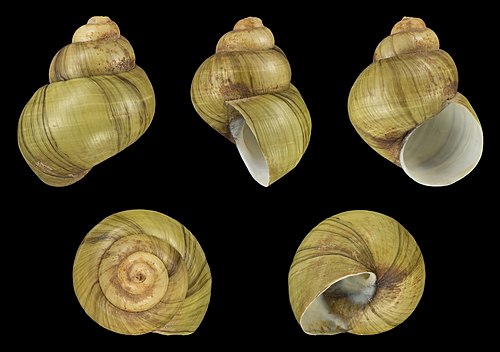Viviparus georgianus, commonly known as the banded mystery snail, is a species of large freshwater snail in the family Viviparidae, the river snails. It is native to North America, generally found from the northeastern United States to Florida and the Gulf of Mexico, and thrives in eutrophic lentic environments such as lakes, ponds and some low-flow streams. The snail has two distinct sexes and reproduces more than once in a lifetime, with females laying eggs singly in albumen-filled capsules. It feeds on diatom clusters found on silt and mud substrates, but it may also require the ingestion of some grit to be able to break down algae. This image shows five views of a 2.1 cm high (0.83 in) V. georgianus shell, originally collected in the U.S. state of Georgia and now in the collection of the State Museum of Natural History Karlsruhe in Germany.Photograph credit: H. Zell
